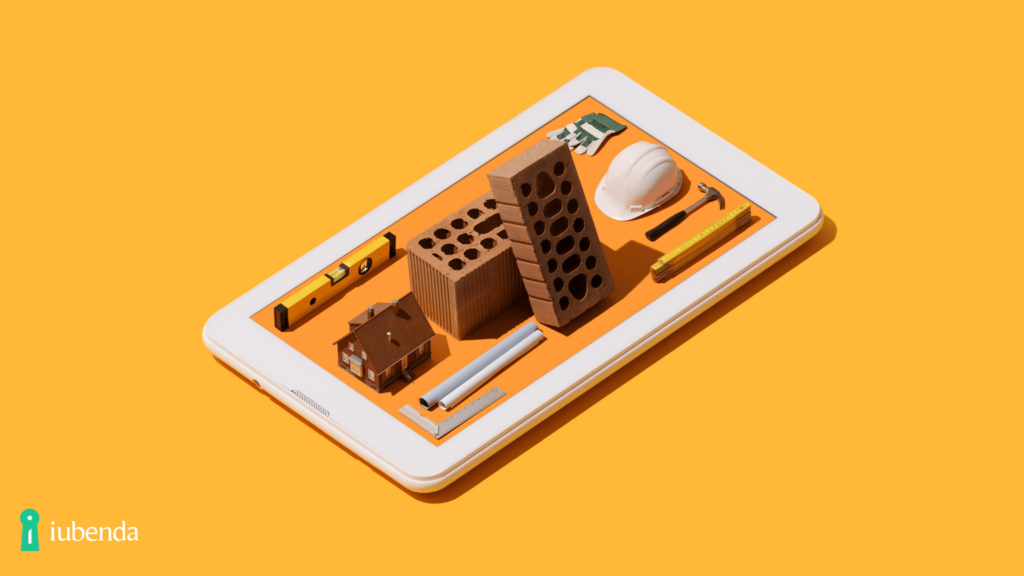Would you like to develop an app but don’t know where to start? The app development process can be overwhelming for a business: there’re many things to consider, making it easy to lose track of critical details.
In our previous article, we’ve highlighted how an app is created, focusing on how your idea can come into reality. This article focuses on the technical process of developing an app, highlighting the steps needed to have your project ready for app stores.

The first step for the app design and development is the product roadmap. A product roadmap outlines the vision, goals, and objectives of the project and it should consider the following aspects:
A technology stack is the set of technologies used to develop an application, including programming languages, frameworks, databases, front-end and back-end tools, and APIs. You can think of it as the material needed to build a house: you need to put it together before you start the actual building. This is critical to the app development process.
When choosing the tech stack for your app you need to consider many factors, such as scalability, security and cross-platform development. Moreover, this choice will also help you hire the right professionals, if you plan on outsourcing the development of your app.
The next step of the developing phase is UI/UX design. UI and UX are really important for creating an app that is easy to use and visually appealing. The UI/UX phase is structured into four main steps:
Information Architecture (IA) is the visual representation of the app’s infrastructure, features and hierarchy. The designer determines what content needs to be included and decides how it should be presented. It’s an essential step to ensure that the navigation is seamless and the app is easy to use.
Wireframes are visual representations of an app’s user interface and show the layout and placement of various design elements, such as buttons, icons, and images. They are typically the blueprint for the final design and ensure that the design is consistent with the app’s functionality. Incorporating wireframe examples can further illustrate how different layouts can enhance user experience and guide the development process.
Style guides include guidelines for typography, color schemes, imagery, etc. These guidelines ensure that the app’s design is consistent and on-brand, regardless of who is working on the project.
Prototypes are a functional representation of the app. They include the app’s features and functionality, allowing users to interact with the app and provide feedback. Prototypes help the development team to identify any usability issues before moving to the app development stage.
Once you’ve finalized the design, it’s time to develop the app. The app development process involves both backend and frontend development.
The backend refers to the server side of the app, including the database, APIs, and server infrastructure.
Backend development typically involves the following stages:
The frontend refers to the client side of the app, and it includes all the elements the user can interact with, such as the interface, navigation, and user experience.
Frontend development can be platform-specific (so, for example, just for iOS or Android) or cross-platform and it typically involves:
Before deploying and launching your app, it’s important that you test it. Various usability testing tools can provide you with an environment where you can run different tests (tree tests, live interviews, 5-second test…). This is a crucial part of the app development process, as it helps identify and fix bugs and ensure that the app functions as you want.
You need to apply testing to different levels:
Apps need to meet specific requirements.
You can check them here 👉 Laws and regulations every app developer should know
We’re now at the end of the app development process. Once the app has been developed and tested, it’s time to deploy it to a production environment. Then you’ll need to submit your application to the app stores, such as Apple’s App Store or Google’s Play Store, which will review your app and either accept it or decline it.
One of the reasons your app could be rejected it’s that it’s missing a privacy policy! App stores have tightened their requirements, and apps that don’t meet security and privacy standards may be rejected.
But don’t worry, creating a privacy policy for your app is really easy with iubenda. With our Privacy and Cookie Policy Generator, your privacy policy is just a few clicks away!
Try our Generator for free now, just click on the button below 👇
Attorney-level solutions to make your websites and apps compliant with the law across multiple countries and legislations.